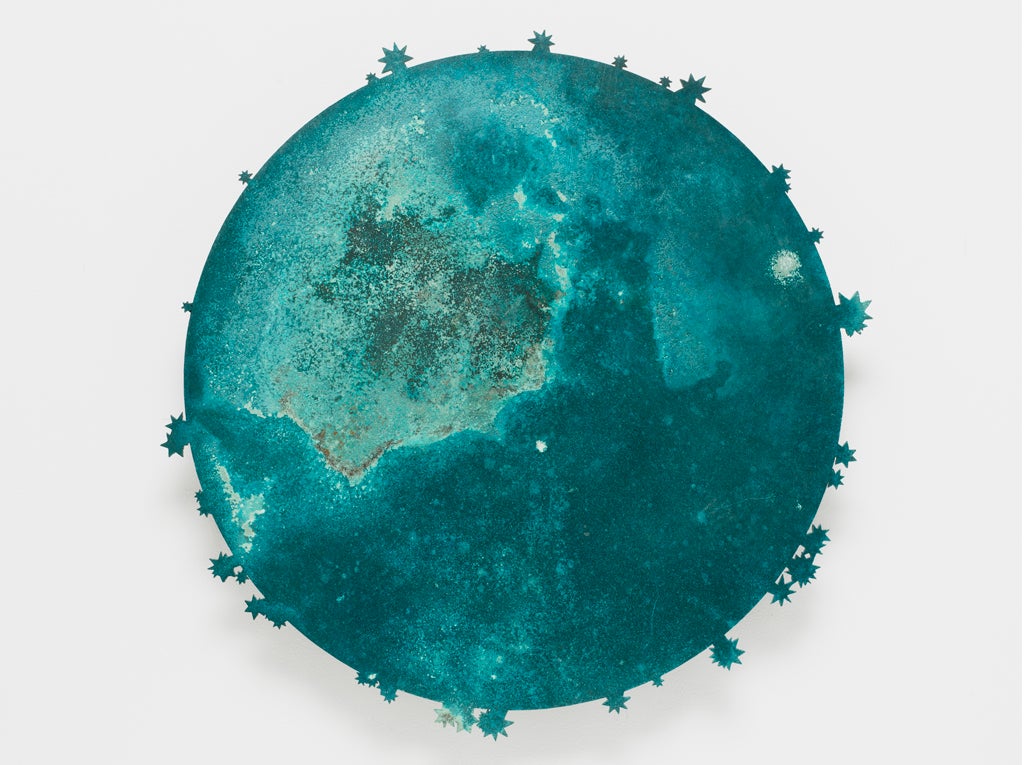Kiki Smith: Behold, Timothy Taylor Gallery, London

Your support helps us to tell the story
This election is still a dead heat, according to most polls. In a fight with such wafer-thin margins, we need reporters on the ground talking to the people Trump and Harris are courting. Your support allows us to keep sending journalists to the story.
The Independent is trusted by 27 million Americans from across the entire political spectrum every month. Unlike many other quality news outlets, we choose not to lock you out of our reporting and analysis with paywalls. But quality journalism must still be paid for.
Help us keep bring these critical stories to light. Your support makes all the difference.
A woman exhales a cloud of faint colour. Her expression is caught in profile, one feeble hand propping up her chin. She stares into the cloud as though she could divine her future there. While the colours are chimeric – pink, and yellow, and lilac – her face is impassive, even hard. She seems almost bored by her own magical power.
This is a lithograph called Breath (2012) by New York based artist Kiki Smith, an established figure since the 1980s, when she drew on Gray’s Anatomy to create sculptures of human organs charged with both feminist and occult significance. Smith, 58, includes traditional processes deemed “women’s work,” such as weaving and craft. Cosmologies of animal and plant life are mixed with explorations of the female form. Mystical oneness is evoked yet these works sometimes shade into the decorative.
According to Marina Warner, best known for her analyses of myth and fairy-tale, Smith’s work looks “unblinkingly at the life in dead things”. Warner reminds us that “breath” also means “anima”. A fascination with the inner primal goddess is one legacy of the women’s movement of the 60s and 70s, and must be lauded with caution. In the sphere of stars, moons, and metamorphoses, there is much scope for conforming to age-old perceptions of women as abstract essences rather than real human beings.
However, Smith’s work seems driven by authenticity. There is an unguarded, open, and light quality to many of these pieces. Guide (2012) is a jacquard tapestry that shows two eagles framed in flight against a crackling, pale sky. It is subtle and quite beautiful.
Bough (2012) is an impressive sprawling bronze sculpture, painted turquoise and hanging on the wall, so that the branches are brought into relief. The turquoise girl perched at the centre is chameleon-like: from far away, she could be a bird. The Blue Moon (2011) sculptures are perhaps less convincing; they look more akin to zodiac-inflected interior design.
The most arresting works in this exhibition are the smallest: Seven Seas (2012) is a series of aquatint etchings that show stormy black seascapes. A rolling, cloudy sky is besieged by finger-prints.
A mysterious, multi-coloured rock moves progressively out of sight until, in the final image, it almost disappears entirely. The clouds are anthropomorphic, inviting interpretation: are they rabbits? Or half-human deities?
There is a sense that darkness is taking over but just beyond is the promise of light.
Join our commenting forum
Join thought-provoking conversations, follow other Independent readers and see their replies
Comments